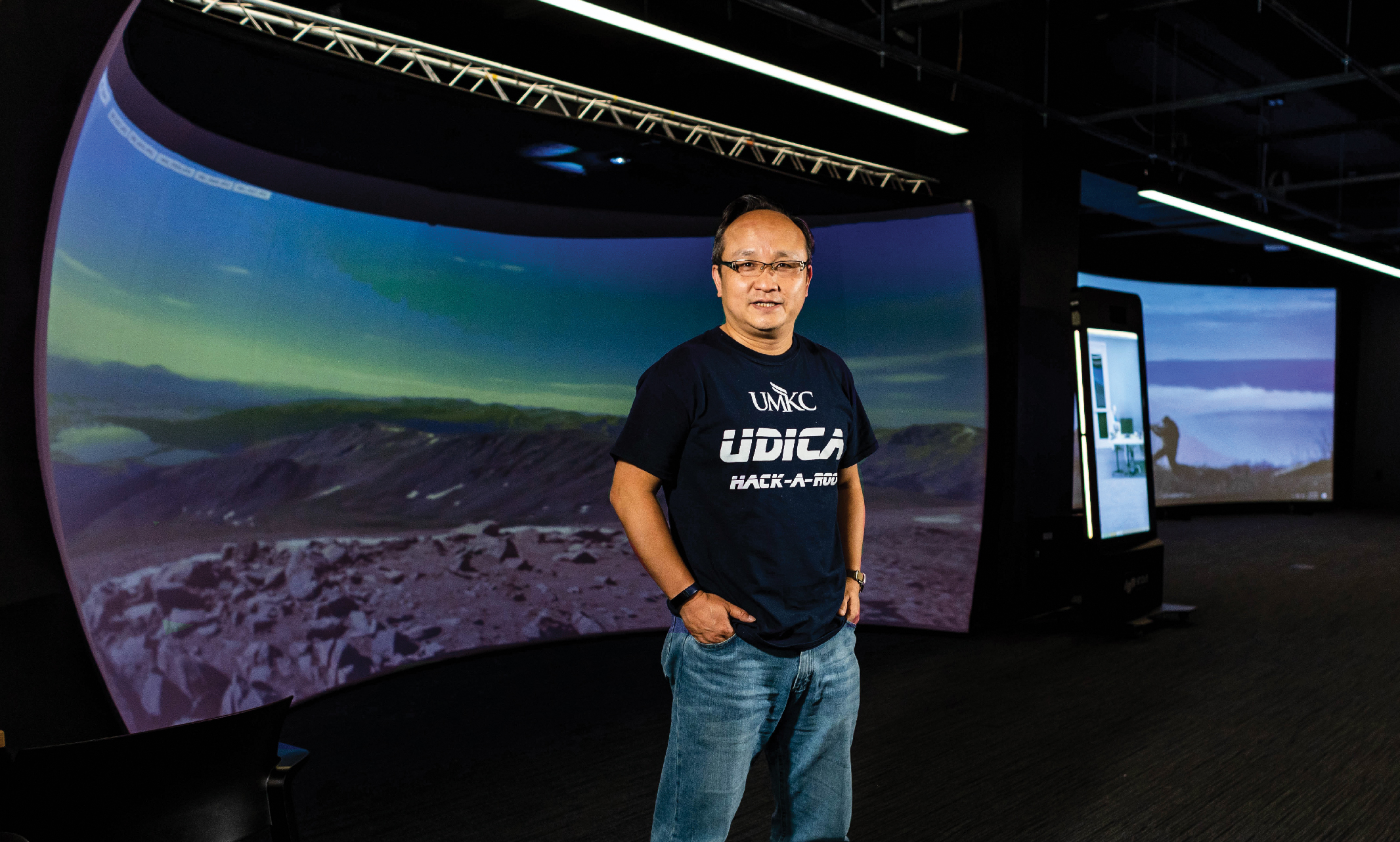We’ve all seen the dangers of war, whether it be in the news, movies or in video games where we get to virtually immerse ourselves in simulated military operations. With various combinations of the A and B and X and O buttons, we strategize actions, move in on targets and eliminate opponents.
In our increasingly digital world, one UMKC professor is exploring how to maximize the virtual experience to serve real-life military operations.
Associate Professor Zhu Li, a renowned artificial reality and virtual reality (AVR) research expert, is helping to bring virtual warfare into reality using the new AVR space located in the Robert W. Plaster Free Enterprise and Research Center.
It’s only fitting that as a war history buff – he can identify nearly every WWII aircraft – Li would be working with the United States Department of Defense and the U.S. Air Force to develop a 3D technology to give soldiers a new set of eyes on the battlefield. Using point cloud compression and communication — a way of compressing and transmitting volumetric visual data to present the real world in 3D — soldiers will be able to literally see the enemy from a mile away.
“The idea is to virtualize special forces in warfare because soldiers get air dropped into hostile-raging situations,” Li says. “Normally there’s no way to tell what they’re getting into, but with this new equipment soldiers don’t have to risk their own life. They send an unmanned aerial vehicle, or drone, with 360 cameras and 3D sensors, and the soldier can navigate the cameras and find the target based on information transmitted back.”
To enable this, the drones need 3D sensing, information capture and compressions and communication to present it back to a different device in real time. It’s the same kind of technology used in military[1]themed video games — goggles included — but reconfigured for real-life scenarios.
“It’s like they’ll have virtual eyes and ears in the battlefield. … They can be anywhere on the battlefield and have precise 3D information about the situations, buildings, vehicles, people, everything,” says Li, comparing it to Google Maps’ street view with added 3D elements.
Having a 360-degree view gives soldiers the freedom to navigate the virtual world and be able to walk around and scope out what’s ahead.
“Number one, it’s safer and, two, it’s more effective because human eyes and perceptions are limited. With this new technology, you can see much further and identify you targets much easier. You have more accurate positioning,” Li says.
He’s still doing the algorithm research, so it will be another three to five years before it’s sent off to produce a prototype. But, Li says, the state-of-the-art 3D and AR/VR technology in the Plaster Free Center will enable him to take this research even further.

